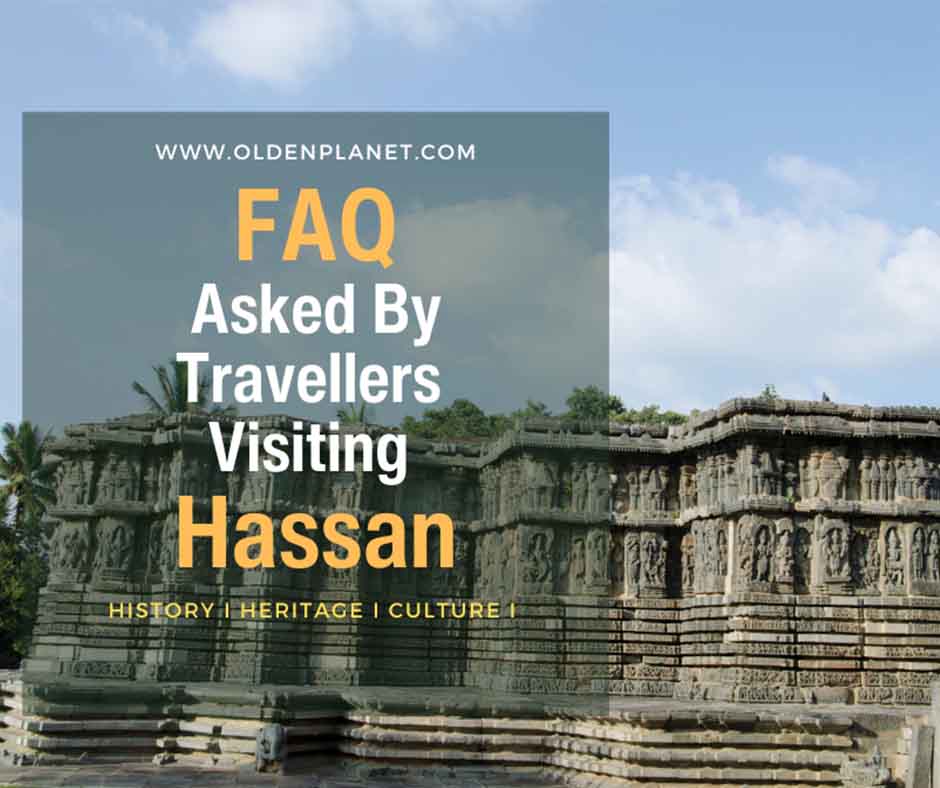Menu

Hassan is a district located in the state of Karnataka, India. It is renowned for its unique “Hassan style” temples, recognized by experts in the field. The Hoysala empire ruled over vast territories encompassing present-day Karnataka and parts of Tamil Nadu during the 12th and 13th centuries.
The dynasty’s kings were highly religious and constructed more than 300 temples in the region. Out of them, about seventy are still surviving. Our main pick for you here is the magnificent Hoysaleswara Temple. Experts in temple architecture refer to the design style used in Hassan as the Kannada Dravidian style, which is distinctively characteristic.
The echoes of the Hoysala legacy are prominently visible in the ancient temples of Hassan. Comparing the temples constructed before the Hoysala period with those built during their reign reveals evident differences in architectural approach.
Although the Hoysala empire made substantial contributions to the region’s development, particularly in temples and culture, the history of the Hassan region predates their arrival. The area was under the rule of the Maurya dynasty in the 3rd century BC.
Subsequently, several empires governed the region throughout history, including the Kadambas and Chalukyas before the Hoysalas and the Vijayanagar Empire after them. However, the Hoysalas brought global recognition to the district through their distinctive temple architecture style.
If you’re visiting Hassan for its heritage, architecture, and history, it’s not just the temples that will amaze you. During the British Raj, the Hassan area developed as a centre for trade, particularly in spices and wood.
The British developed Hassan in the 18th century as an administrative centre for business. Many British-style buildings still stand in Hassan. The French also had some interest in the area.
Hassan is located almost midway between Bangalore and Mangalore. The town is well-connected by rail and road networks, ensuring a smooth journey from nearby cities and major hubs.
The nearest airport is Mangalore International Airport, approximately 170 kilometres away. There are numerous bus services connecting Mangalore with Hassan. We chose to hire a taxi to reach our destination.
Situated at an elevation of about 3500 feet above sea level, Hassan enjoys dry yet cool weather for most of the year.
The best time to visit Hassan is during the winter months, from October to February.
The weather during winter months is cool and less humid, making it ideal for exploring historical sites and enjoying outdoor activities without the scorching heat of summer or the monsoon rains.
Like the uniqueness of temple architecture here, the localized dance forms such as Yakshagana and classical music recitals illuminate the region’s artistic legacy.
“In Hassan, you won’t come across any drastically different foods. Most dishes here are crafted from rice, ghee, and coconut. However, we’ve observed that certain restaurants offer common South Indian dishes with a distinct ‘Hassan touch’ – something worth appreciating.
We recommend spending at least two nights in Hassan. Some temples require a bit of travel outside the city. Exploring places beyond the city limits will give you a glimpse of rural life worth experiencing.
If you appreciate and understand Dravidian temple architecture, you’ll find exploring Hassan to be quite enjoyable.
An expedition is the application of known travel knowledge to explore unknown lands. Pally Planet is an online resource for adventure travelers that encourages you to explore more! This blog offers destination insights, itineraries, and travel tips for nature enthusiasts, wildlife photographers, birdwatchers, anglers, and trekkers. Let the expedition begin!
An expedition is the application of known travel knowledge to explore unknown lands. Pally Planet is an online resource for adventure travelers that encourages you to explore more! This blog offers destination insights, itineraries, and travel tips for nature enthusiasts, wildlife photographers, birdwatchers, anglers, and trekkers. Let the expedition begin!
Disclaimer: The photos and logos displayed on this website are the property of their respective brands of accommodations. Any reproduction or use without their permission is strictly prohibited.
7, GD Villas, Palarivattom, Kochi, IN 682028, +91 484-4059260, [email protected]
Copyright © 2022 | All Rights Reserved.